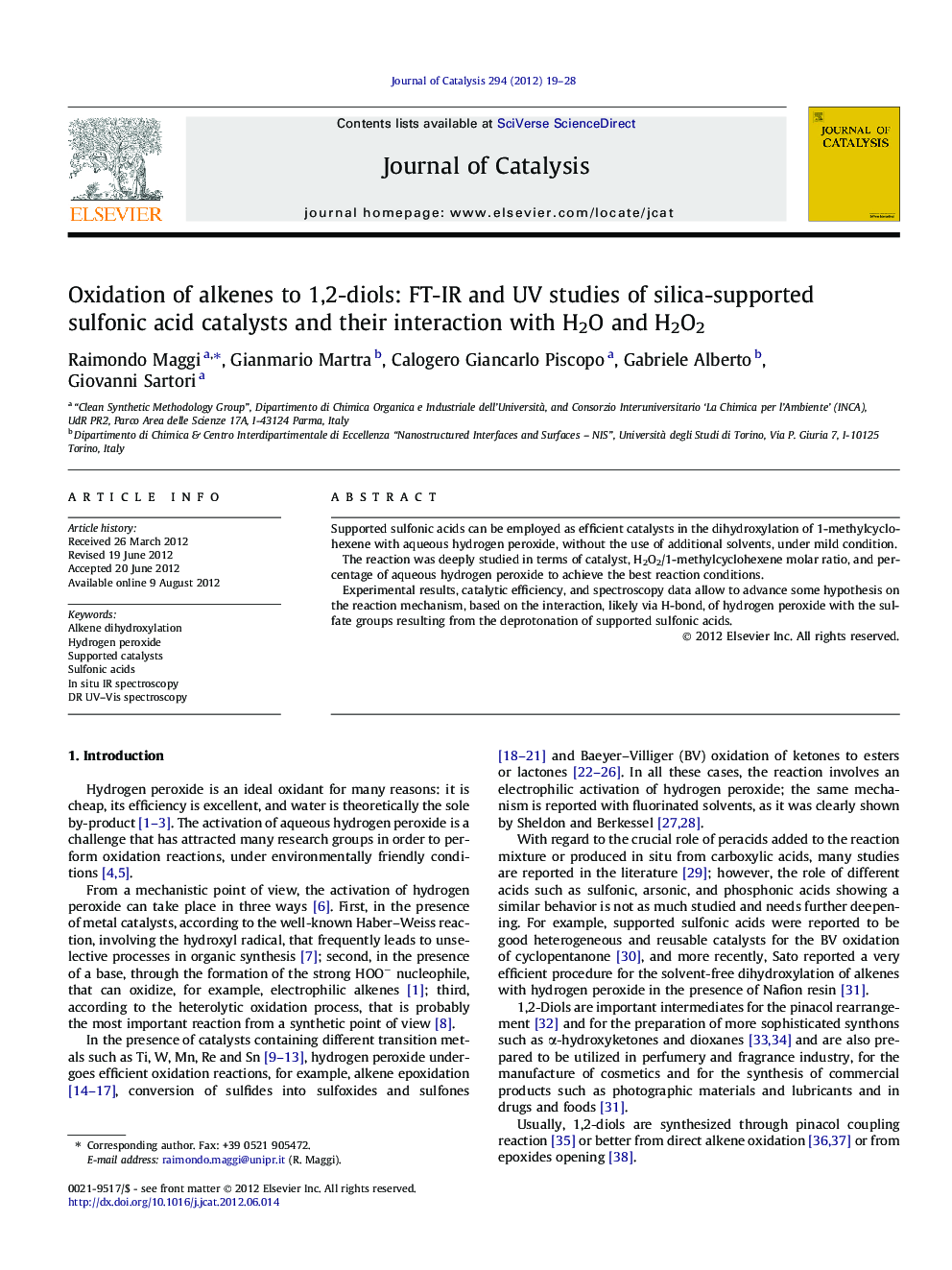| Article ID | Journal | Published Year | Pages | File Type |
|---|---|---|---|---|
| 61376 | Journal of Catalysis | 2012 | 10 Pages |
Supported sulfonic acids can be employed as efficient catalysts in the dihydroxylation of 1-methylcyclohexene with aqueous hydrogen peroxide, without the use of additional solvents, under mild condition.The reaction was deeply studied in terms of catalyst, H2O2/1-methylcyclohexene molar ratio, and percentage of aqueous hydrogen peroxide to achieve the best reaction conditions.Experimental results, catalytic efficiency, and spectroscopy data allow to advance some hypothesis on the reaction mechanism, based on the interaction, likely via H-bond, of hydrogen peroxide with the sulfate groups resulting from the deprotonation of supported sulfonic acids.
Graphical abstractSupported sulfonic acids efficiently catalyzed the 1-methylcyclohexene dihydroxylation with aqueous hydrogen peroxide, without the use of additional solvents, under mild condition. Results of catalytic efficiency and spectroscopy data allowed to advance some hypothesis on the reaction mechanism.Figure optionsDownload full-size imageDownload high-quality image (53 K)Download as PowerPoint slideHighlights► Sulfonic acids supported on amorphous siliceous materials. ► Physico-chemical characterization of the supported catalysts. ► Test of these catalysts in the dihydroxylation of 1-methylcyclohexene. ► Good yield and excellent selectivity with SiO2–(CH2)2–(C6H4)–SO3H. ► Study of the interaction of the catalysts with reagents.
